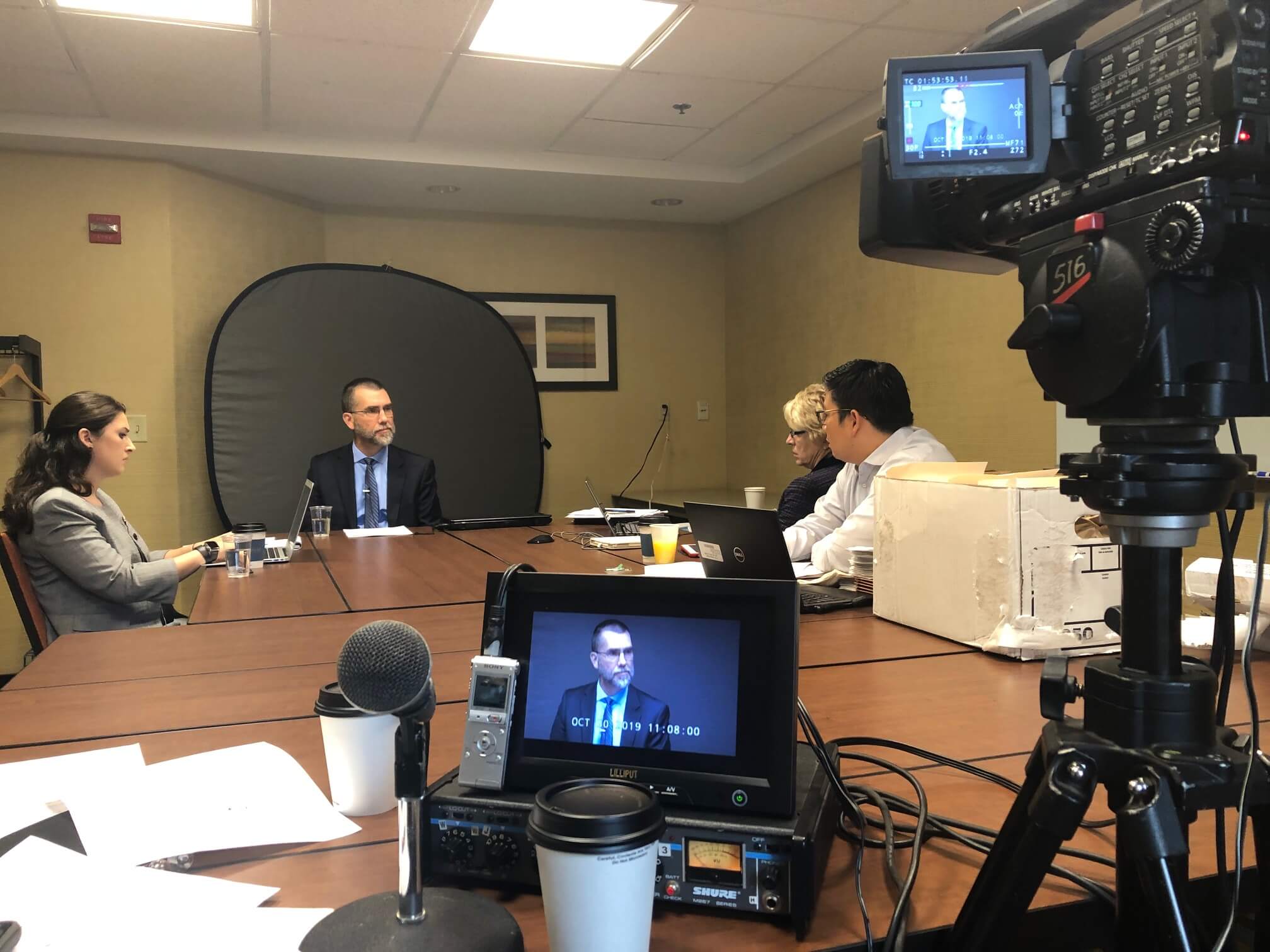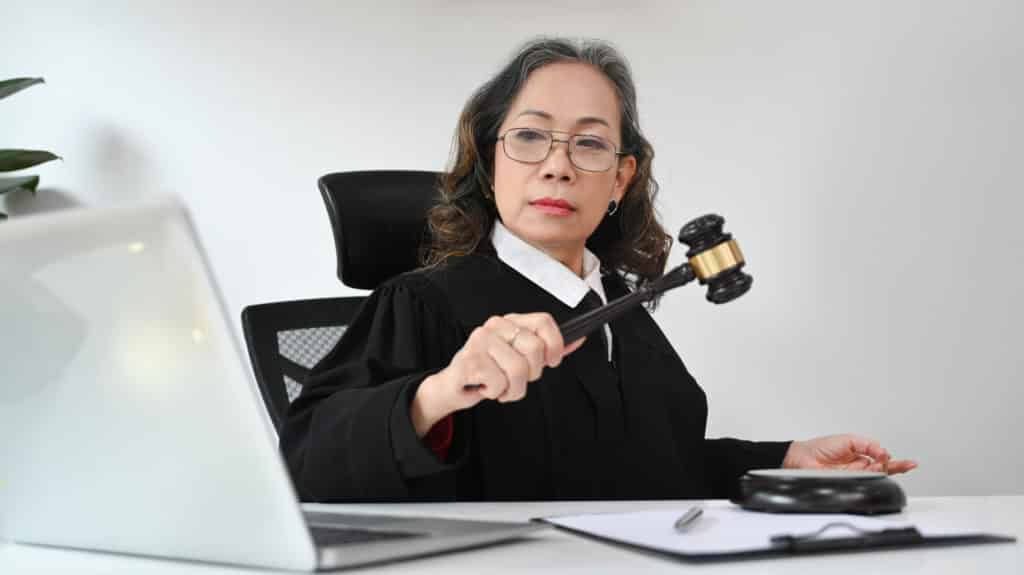Understanding the Effect of Legal Videography on Case Outcomes
Understanding the Effect of Legal Videography on Case Outcomes
Blog Article
Exploring the Devices of Legal Videography: Unveiling Its Procedure in Safeguarding Genuine Visual Testament for Judicial Procedures
In the realm of judicial procedures, the function of lawful videography stands as a foundation in maintaining and offering aesthetic evidence. As technology continues to advancement, the mechanisms behind legal videography have actually become increasingly intricate, offering an essential layer of credibility to statements recorded on video clip.
Historic Evolution of Legal Videography
Examining the historic progression of legal videography discloses a substantial makeover in the catching and discussion of aesthetic proof within the legal landscape. In the past, legal proceedings greatly relied upon composed records and photographs to record events and give evidence. With the advent of video modern technology, the legal industry saw a standard shift in exactly how visual testimony was recorded and provided.
The evolution of legal videography can be traced back to the late 20th century when improvements in video recording devices made it much more easily accessible for use in courts. This technical development not just boosted the precision and reliability of aesthetic proof yet also changed the way situations existed to discretionary (Legal Videography). Attorneys began to recognize the convincing power of video recordings in communicating feelings, nuances, and non-verbal signs that created pictures or records alone might not record properly

Innovation Improvements in Video Clip Documentation
What essential technical innovations have reinvented video documentation in the lawful area? The legal field has actually seen considerable improvements in video documentation modern technology that have enhanced the authenticity and dependability of visual evidence in judicial process.
Additionally, innovations in video security and watermarking innovations have reinforced the safety and security and tamper-proof nature of video clip proof, safeguarding it versus unauthorized modifications or tampering. The advent of cloud storage remedies and remote access abilities has streamlined the storage space, access, and sharing of video clip evidence, helping with smooth collaboration amongst legal experts and ensuring efficient access to important visual testimonies when needed. These technical developments in video paperwork have undoubtedly revolutionized the legal field, improving the accuracy, integrity, and admissibility of visual proof in judicial proceedings.
Duty of Legal Videographers in Court Room Setups
The evolution of video paperwork technology in the legal area has demanded a critical duty for legal videographers in court settings, making sure the honesty and reliability of aesthetic testimonies offered throughout judicial proceedings. Legal videographers play a basic role in catching and preserving exact visual evidence that can be critical in court instances. Their obligation encompasses establishing equipment, recording procedures, and producing high-grade videos that properly show the occasions in the court.
In courtroom Related Site setups, lawful videographers have to follow stringent guidelines and requirements to preserve the authenticity of the aesthetic record. They have to have an eager eye for information and an extensive understanding of lawful treatments to make sure that the video they catch is a true representation of the events that transpired. Additionally, legal videographers usually function very closely with legal teams to guarantee that the video evidence straightens with the case's demands and can be efficiently presented in court to sustain the lawful debates being made. In general, the role of legal videographers in court settings is essential in upholding the principles of justice and making sure the openness of lawful process.

Ensuring Admissibility and Integrity of Video Clip Proof
To maintain the credibility of aesthetic evidence offered in lawful procedures, ensuring the admissibility and stability of video clip proof is an important obligation for lawful videographers. Admissibility refers to the approval of evidence by the court, and for video evidence to be acceptable, it should fulfill specific criteria. Lawful videographers play an essential duty in making certain that the videos they record adhere to the policies of evidence, such as significance, credibility, and integrity.
Integrity of video proof entails maintaining the originality and accuracy of the footage from the time it is taped until it is offered in court. This includes firmly saving the video clip documents, documenting the chain of link custody, and stopping any type of meddling or modifications. Legal videographers must abide by stringent protocols to guarantee the honesty of the video proof and protect against any kind of difficulties to its credibility.
Future Trends in Legal Videography
Given the raising dependence on technology in lawful process, legal videographers are positioned to embrace innovative advancements forming the future of visual testament capture and presentation. One of the popular trends on the horizon is the integration of online fact (VR) and augmented truth (AR) technologies right into lawful videography. These innovations have the possible to revolutionize exactly how aesthetic evidence is offered in courts, allowing courts and judges to immerse themselves in the scene of the crime or incident.
Additionally, making use of fabricated intelligence (AI) algorithms for video clip analysis is expected to improve the procedure of assessing and evaluating big quantities of video footage. AI can help in identifying key minutes, anomalies, and patterns within videos, enhancing the performance of lawful investigations.

Final Thought
In final thought, legal videography has played a vital role in providing authentic visual evidence for judicial procedures. Through technical improvements and the proficiency of lawful videographers, the honesty and admissibility of video evidence are made sure in court setups. As lawful videography remains to evolve, it will be vital to copyright standards that keep the accuracy and dependability of aesthetic testament for the future of legal process.
Analyzing the historical development of lawful videography exposes a substantial change in the catching and presentation of visual evidence within the legal landscape.The development of video documents modern technology in the lawful area has actually necessitated an essential role for lawful videographers in court room setups, guaranteeing the stability and reliability of aesthetic testaments offered during judicial proceedings. In addition, lawful videographers frequently work carefully with lawful teams to make certain that the video evidence lines up with the situation's requirements and can be successfully provided in court to sustain the lawful arguments being made.To preserve the credibility of visual proof offered in legal process, ensuring the admissibility and honesty of video proof is a crucial duty for lawful videographers. As lawful videography continues to advance, it will certainly be essential to maintain requirements that maintain the precision and dependability of visual statement for the future of lawful process.
Report this page